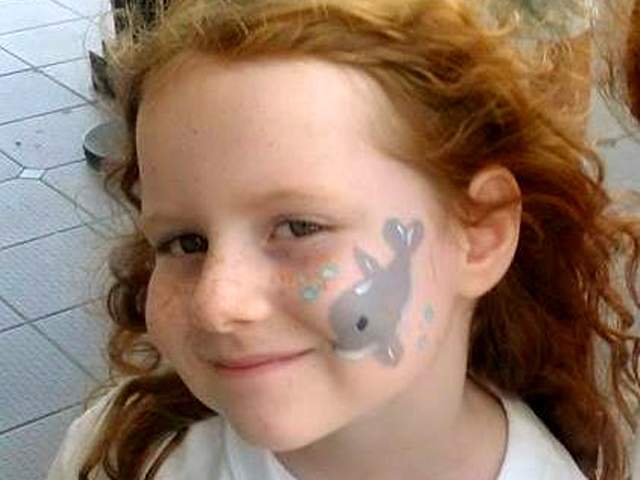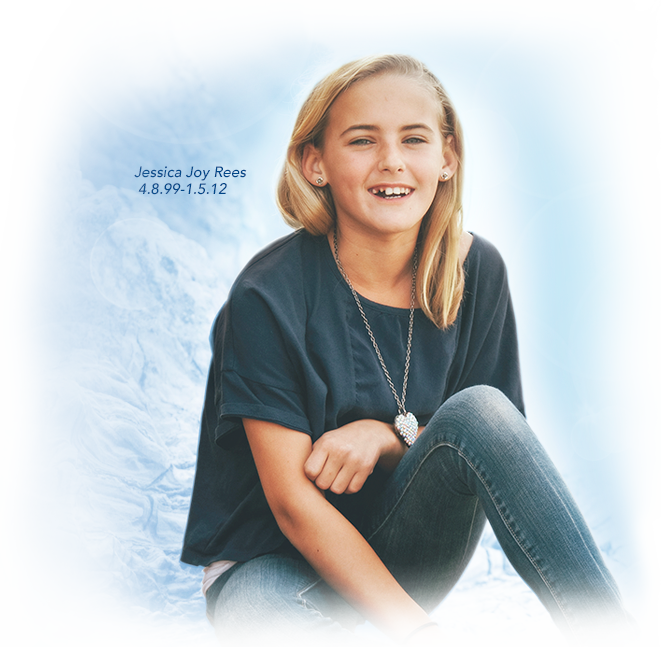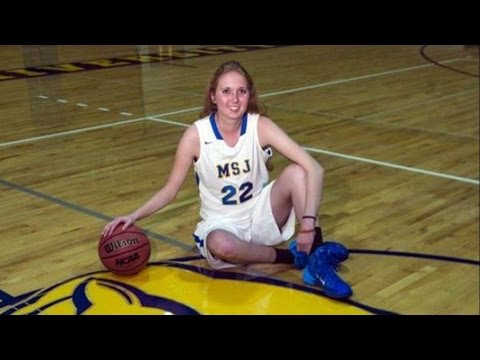







This is Nasya Myree Morgan. She was diagnosed with a rare terminal brain cancer known as Diffuse Intrinsic Pontine Glioma (DIPG) on October 31, 2013. The tumor was found when Nasya's mother noticed something was going on with Nay's left eye and she was falling more frequently. During cheer practice Nasya would be slightly turned with her head tilted to watch the teacher. Her family let it go for a couple of days before her eye was staying stuck in the corner of her eye. Then her mom knew she needed to get Nasya into the doctor, and soon. We were told that she just had a normal tumor, and then they told us because of its location it as inoperable. The family was nowhere close to prepared for what the doctor had just told them. The doctors gave Nasya 9-12 months to live with the cancer before it ran its course. The family held her closed and cherished the time they had left to be with their baby girl. Nasya had one large loving family who would do anything to keep that little princess smiling. At the time of diagnosis Nasya was 4. They put her on chemo and radiation to begin her treatment. This type of treatment did not work for long. The radiation and chemo made her tumor grow rapidly. We instantly stopped both. Nasya had visited a holistic doctor who said it wasn’t cancer that it was parasites in the brain. The doctor recommended putting her on different herbs to kill of the parasites. Nasya was able to do so many things with the little time she was given. She had gotten to dance her last dance recital even after the doctors told her mom that she wouldn’t be able to do much of anything. She was also included in her last cheer competition which she was also told she wouldn’t be able to do. Nasya best of all was able to have the birthday party of her dreams for her 5th birthday. She had received a special visit from Elsa and Miss Ohio. Nasya was one lucky little girl despite her cancer. Her wonderful loving family and friends were always helping out around the house, making dinner, planning fundraisers, and giving her the best life possible. Nasya was able to life in her own frozen kingdom while it lasted.
On November 9, 2014 Grace White was an ordinary six year old in North Carolina, unable to comprehend the new life she would soon enter. She attended church that Sunday morning with her mother, brother and two sisters; her father was serving in Afghanistan. While walking next to her mother for communion, she fell, hard. She fell so hard that she needed a stitch on her head, but she never got it. Hours later, an MRI revealed that she had a small tumor on her brain stem — Diffuse Intrinsic Pontine Giloma (DIPG), the same rare and deadly cancer Mount St. Joseph's Lauren Hill shares. Her treatment began shortly after. November 23 was the 3rd day of her official treatment. The family continue to find ways to laugh and smile. In order to keep smiling they had to stay strong though the good and the bad. They call her new drug for chemo her sexy drug. Doctors told Lauren that she would not live more than two years. Doctors are now telling her that she may not live until 2015. DIPG is rare. Fewer than 200 cases a year are recorded in the United States. Most of the diagnosed are children between 5 and 7 years of age. Currently, fewer than 10 percent of children diagnosed with DIPG survive longer than two years. Unlike other forms of pediatric cancer, progress in treatment for DIPG is lacking. |
Jessie was 11 years old when diagnosed. She had gone to the eye doctor when she was in 4th grade and found out that she had a lazy eye and she was given exercises to fix it. Her problem was fixed until one day she was out walking with her dad and he noticed that she was walking with her head tilt. He asked her if he stepped back if she could still see him, at first she said it was just blurry and then she said she was seeing doubles. Her dad just thought maybe she should start doing her exercises again since it seemed to work last time. They took Jessie to her doctor who said that she had some muscle weakness in her left eye. She was also showing symptoms of a sinus infection, the doctor prescribed her antibiotics to help. The weeks to follow were full of doctor visits, one after another. One of the last visits the doctor asked her symptoms lately and with all that were listed the doctor recommended an MRI to rule out all of the bad. No one was ready for what the MRI had shown. On March 2, 2011 Jessie was diagnosed with DIPG. To read more on Jessie's story you can go to amazon and order her book Never Ever Give Up: Inspiring Story of Jessie and Her Joy Jars. Jessie's parents also wrote a letter to the President of the United States of America Mr. Obama himself. If yuo are interested read more about it by going to this link, http://tiny.cc/DIPGletter. |
||||||
|---|---|---|---|---|---|---|---|
On October 1, 2013, Lauren Hill, a senior basketball player at Lawrenceburg High School, committed to play college ball at Mount St. Joseph University. Less than two months later, after going to the hospital thinking she had a concussion, tests revealed she had DIPG, a form of brain cancer. She thought to herself, OK, what are they going to do? She wanted to keep playing that year, she didn’t want to stop. She shared her reaction when the doctors said the tumor was inoperable and the best case scenario was that she had two years to live.“That was really hard to process,” said Hill. “It’s something that hits home. It really confuses you; it’s like having the rug being pulled out from underneath your feet.” Hill continued to play her senior year, despite undergoing chemotherapy and radiation, and set her sights on playing for The Mount this season. However, a follow-up MRI revealed that the tumor had grown even larger. With the tumor progressing faster than expected, Mount St. Joseph’s received permission from the NCAA to move their originally scheduled game against Hiram College from Nov. 15 to Nov. 2. Additionally, the game has been moved to Xavier University’s Cintas Center to accommodate a larger crowd, something Hill is very excited about. “I think it’s going to be a really, really big day,” said Hill. “I’m still shell-shocked at how far this story is getting because I never would have expected it to reach this many people. I’m speechless right now.” Over the past year, Hill has decided to attack her situation and do as much as she can to help others who face the same fight. “I know that this is a disease that mostly affects little kids,” said the 19-year-old. “I’m old enough to express my symptoms and talk to the doctors clearly about what’s happening to me and what’s going through my mind. Kids don’t have the words or the ability to articulate what’s happening to them. So I need to be the voice for little ones.” Despite facing terminal cancer, Hill has truly embraced being a role model for others, while fighting for her life. “I’ve always tried to be somebody to be looked up to,” said Hill. “The response has just gotten so big, I’m just really honored and grateful. I feel so blessed that this is all happening. A cure is needed and will be found.” |
|||||||
|
|||||||



